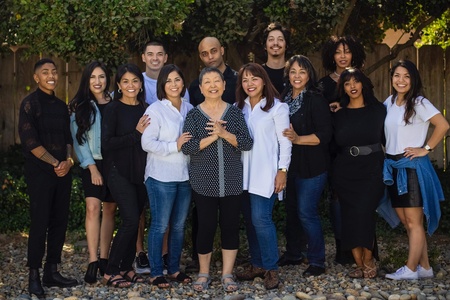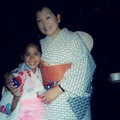I live in a bubble.
I did not grow up nor in my adult life have I traveled and explored the United States, like I feel I should be doing, being an American citizen all my life. It wasn’t until I started working in the Japanese American community that I had various opportunities to travel and broaden my American experience.
Taking only what I knew from my experiences living in Southern California as a Japanese American, I took my naïve and ignorant self to Idaho, specifically to the Minidoka Pilgrimage, to travel an exhibition for the Japanese American National Museum. It wasn’t until I was in Idaho that I fully and deeply recognized that Japanese Americans were dispersed all around the United States. Japanese Americans were coming all over the place to be rejoined at this place of history.
I had the pleasure of interviewing and speaking with Mia Russell, Executive Director of Friends of Minidoka who was born in Visalia, California but was raised in Idaho. She shared her experiences growing up in Idaho being multiracial, exploring her identity, ties to Japanese American history, and how she is continuing on the journey of creating community.
Q: Not having a direct relation to the Japanese American incarceration and not learning about it in Idaho, how did you get more interested in exploring Japanese American history and on your path to working at Friends of Minidoka?
I went to a university in Southern California at a really small school called Soka University. There are only about 400 students. That was actually the first time I learned about the incarceration [of Japanese Americans]. We don’t learn about it in Idaho, even though I was in honors classes and grew up two hours from Minidoka. It took me going to college and reading about it in an introductory history class. When I first heard about the camps, I didn’t feel a connection because I didn’t even know what being Japanese American was. I grew up knowing I had family in Japan and would visit them.
Growing up in Idaho, outside of any sort of community, I didn’t have any concept of Japanese American identity or history. So, I didn’t even connect to the camps when I first heard about them. It was a couple years later when I needed a topic for my senior thesis and I was living in South Pasadena with my aunt, and she said “why don’t you take another look at the camps?” That is when she told me that my uncle’s family was incarcerated. Then I started reading about the camps a little more and is when I discovered that there was even a camp in Idaho.
My photography professor had been photographing the Manzanar pilgrimage for the Manzanar Committee for over 20 years, so he was my connection to the community. He connected me to folks on the committee and I went to meetings and interviewed incarcerees on how they felt the National Park Service had preserved their history and how they felt their stories were being told. It was exploring the purpose of pilgrimage and collective memory. That was my first introduction, just as a student. And then I moved back to Idaho and thought that I could keep studying this history and keep looking at the relationship between the community and the NPS. That was kind of my journey. After I finished my masters in museum studies, I got hired by the Friends of Minidoka, so it has just been this rabbit hole that I fell into all from a thesis paper.
Since then, I have been able to visit the other camp sites through work, because they invested in me getting out there to see the other sites and meet the other people involved. I was able to visit all ten camps, plus Crystal City and Honouliuli. I feel like I’ve been reclaiming a Japanese American identity through my work and understanding the Japanese American history and community dynamics. I currently am Vice President of my JACL board, which I didn’t even know we had in Idaho growing up.
A lot of it has been a dance between “I don’t really have a camp history, personally” and “what am I able to claim as being relevant to still being a Japanese American, an American, someone who is passionate about it, and an Idahoan and everything else?”
Q: Reflecting on growing up in Idaho, how do you think that shaped your cultural identity?
I felt growing up in Idaho, I didn’t fit in to the majority culture, but again I didn’t know what Japanese American community was, so I felt like identity was closely tied to my family. My family is very unique and mixed.
In California, my grandmother is a Japanese immigrant, my grandpa is second generation Mexican-American, and my cousins are super mixed. My family unit is home to me and that is what my identity is – being in that family, in that space, with those foods. I remember not knowing if certain words we used were Japanese or Spanish until I was much older. There was also some play on words, like my grandpa is Mexican but he will say ashita mañana when he goes to bed, instead of hasta mañana.
At the same time, I remember very clearly visiting a lot of my grandmother’s friends in the Central Valley, where there are a lot of Japanese American famers in the area. We would always go to visit Nisei farmers she was friends with and pick fruit. We would go to obon in Visalia or Fresno. I knew there was this one subsection of my people that my grandmother interacted with, but sometimes they would speak Japanese and sometimes they would speak English. I also knew the temple community and we would go to obon, or a rummage sale, or a& sukiyaki fundraiser, but that was it. In college, when I read Farewell to Manzanar, I was like “oh, my grandmother’s friends are Nisei” and when it all kind of made sense. It sounds crazy to me now that it took me so long to understand it.
Even in surveys and the census, I always look for the "multicultural" or "mixed race" option. I do feel like a mixed kid. I do identify with my Japanese side, my Mexican side, and am white-passing. But generationally, I am much closer to the Japanese side because my grandmother’s an immigrant and I grew up knowing about family in Japan, visiting them, and also studied abroad. So it’s interesting in some ways that there are certain touchstones of Japanese American culture that I feel like I have no understanding of but then there are things about Japanese culture that I have a closer connection to than others.
To be continued...
*This article originally appeared in the "Diaspora" issue of Yo! Magazine, an online zine celebrating and exploring Japanese American stories, food, and culture.
© 2020 Dina Furumoto





